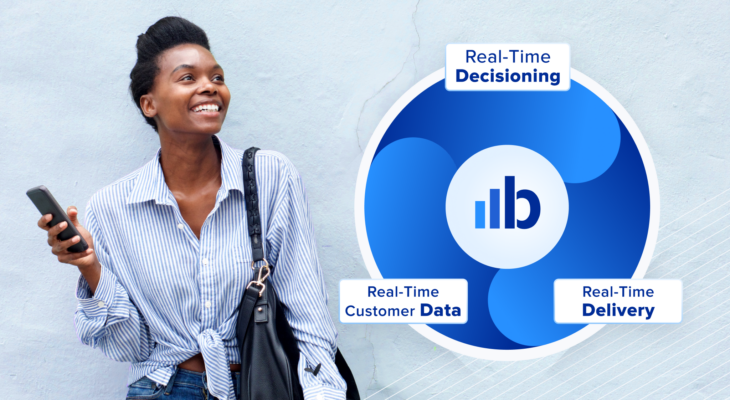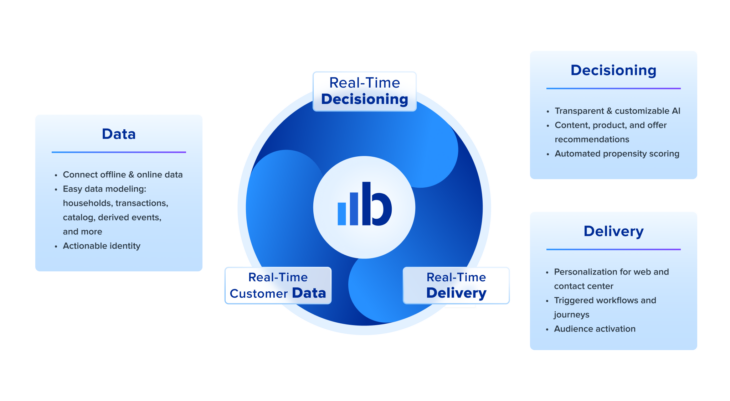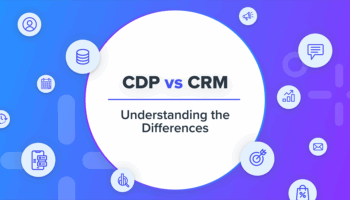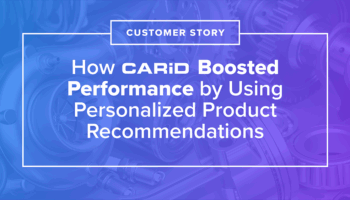“Time is an illusion. Lunchtime doubly so”, wrote Douglas Adams in the Hitchhiker’s Guide to the Galaxy. Recent news from the CDP world might leave some CX leaders questioning whether “real-time” as advertised by some CDPs might actually be an illusion. The reality however is clear: customers expect brands to personalize their experience in real-time, and the brands that can not satisfy this expectation will get left behind. CDPs play an essential role in meeting this need, and it is high time that we as an industry set the record straight on what constitutes real-time.
Real-Time CDP: Time to Get Real

Responding to Customer Signals in Real-Time
While most brands understand the importance of real-time, few have been able to deliver on it. A McKinsey study on the future of CX noted that “Nearly two-thirds of respondents ranked the ability to act on CX issues in near real time as among their top three priorities, but only 13 percent of leaders expressed certainty that their organizations could achieve this level of rapid insight through existing systems.”. At the same time, McKinsey also found that personalization leaders are able to get this right. It noted that leaders develop “AI-driven decisioning capabilities so they can respond to customer signals in real-time.”
Customer Data Platforms, or CDPs, have a big role to play in understanding the signals, and delivering a personalized experience. Gartner defines a CDP as “a marketing technology that unifies a company’s customer data from marketing and other channels to enable customer modeling and to optimize the timing and targeting of messages and offers.” In other words, CDPs have three related functions, the 3 “D”s:
- Data Unification: CDPs unify data from “a company’s customer data from marketing and other channels”
- Decisioning: CDPs enable decisioning in the form of “customer modeling”
- Delivery: CDPs use the decisioning to help deliver “targeted messages and offers”.
Simply put, a real-time CDP must be able to act in real-time (typically sub-second latency) in all of these functions in order to truly help brands meet customer expectations. The CDP must be able to do this on both inbound channels (like website and contact centers, that by their very nature demand real-time interactions), as well as on outbound channels, where real-time triggers are proven to be much more effective than batch communication.
The 3 “D”s of a Real-Time CDP
Recent news would have us believe that the definition of real-time is unclear, as it relates to a CDP. It shouldn’t be so. In simple terms, a real-time CDP is one that can tackle the trifecta of “Data-Decisioning-Delivery” in real-time:
1. Unify data and update profiles in real-time: At the most basic level, CDPs must update their customer record within milliseconds. Since the Delivery & Decisioning layers depend on profile data, getting profiles to update in real-time is essential.
Doing so is admittedly not simple. After all, it involves not only ingesting and validating “event” data in sequence, but also resolving identity (and potentially merging certain profiles), updating the graph of customer interactions with products and content, calculating revised values for lifetime aggregate metrics, and in certain cases, performing campaign attribution. Buyers must be wary of systems that don’t support stream processing, and run solely on top of data warehouse data that relies on latency-inducing batch ETL processes.
2. Continuously update predictive scoring, to enable real-time decisioning: A Real-Time CDP must have rapid decisioning that updates with every piece of data coming in. Predictive models must be re-scored in real time, and content or product recommendations must be updated based on event stream data.
As customers, we fully expect brands to really know both our recent intent, as well as our interests, when content, products or offers are being recommended to us. The CDP’s decisioning engine must be able to combine real-time data that gives strong clues about intent, with longitudinal data about persistent interests.
3. Deliver real-time personalization on both inbound & outbound channels: Not only must the CDP have real-time APIs (a “pull” mechanism) to access profile data, decisioning attributes, and recommendations for inbound CX and DX channels, it must also be able to support intelligent trigger based communication (a “push” mechanism) on outbound marketing channels.
It’s important that these access mechanisms provide access to the full profile, and are not just limited to the “event payload”. For instance, even without a CDP, it’s easy to send an order confirmation email in real-time, with “personalization” limited to the data contained in the order event; however, can the CDP help uplevel this, and include relevant next-best-product recommendations based on the full profile, while still meeting the real-time trigger requirements?
Stop Putting Your Customers on Hold
Some might say that “good things come to those who wait”. However, the reality is that customers do not like to wait for brands to figure out their needs. Relying on a CDP that does not offer real-time is akin to putting your customers on hold. That’s why marketing and CX leaders must assess the effectiveness of their stack in being responsive to customers.
Here are three simple, yet powerful, sets of questions you should be asking your CDP:
- Data Latency: Can the CDP ingest real-time data from source systems (e.g. APIs or mobile SDKs), or does it rely entirely on data that has been organized first in a data warehouse? How quickly does the CDP update and merge profiles in response to new event data?
- Decisioning Latency: In response to new data, how quickly does the CDP update its scoring for predictions? How soon are product and offer recommendations updated?
- Delivery Latency: Does the CDP offer real-time APIs for accessing profiles & predictions on inbound channels like websites and contact centers? For outbound channels, can it go beyond basic event triggered messages, and make all next-best-recommendations available for personalizing the content of the message in real-time?
If your CDP doesn’t pass the test on these 3 questions, it’s time to get real: you don’t really have a modern CDP!





